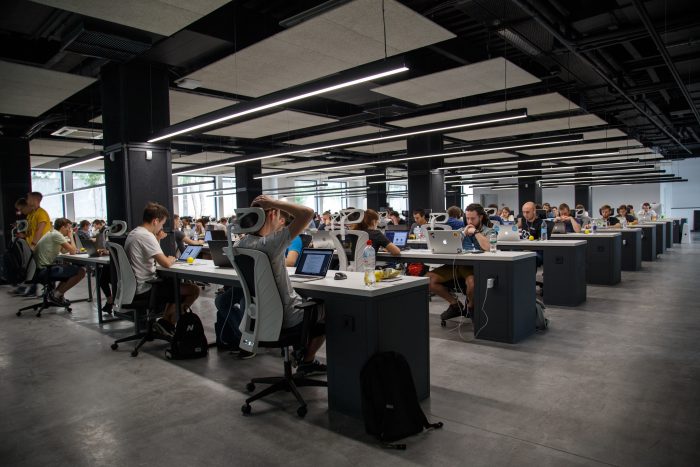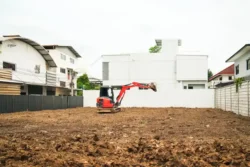5 rules for successful office investment (in any market)
Published
November 20, 2018
Published
November 20, 2018

“Risk comes from not knowing what you are doing”. Warren Buffett’s advice rings true for investors who don’t have the right tools (or stationary) office property investment.
But by applying good property fundamentals and solid research, an investor can kick risk to the curb and stare up to tall returns from office real estate.
Here’s how you can get your returns to outweigh your risk, with 5 rules for successful investment in office real estate (no matter the market):
1. Buy well
The keys to successful investing hides in what you do before you spend a dime. So, give your office property investment every chance of unlocking success by performing intense due diligence and market research.
What’s been happening in the market? Has it undergone a correction recently? If the market is on the verge of improving it could be a great time to find ripe investment opportunities.
Also check whether vacancies have battered the office market for a while.
Office buildings will lose value when vacancies are high, especially when landlords have said yes to tenants with weak profiles. It could be time to buy if office assets have lost their relevance in the market.
The buying process is vital for success in property. There’s no one-size-fits-all approach when purchasing commercial real estate. So, if you don’t know where to begin, consult with or invest alongside experts.
2. Understand office property cycles

If you didn’t know where you were holidaying, you wouldn’t know how to pack. Will it be tropical or cold weather? Will you need bikinis or ski boots?
An office property investment is much the same, you need to understand the environment before committing to anything.
For example, in a market that’s bottomed out but finally showing signs of life, office properties will usually see what’s called a ‘flight to quality’.
A flight to quality means tenants will look for low rents and high incentives by relocating to higher quality Premium or A-Grade office space. If the market’s bottomed and you buy a low-grade office asset (with neglected insides, and poor NABERS rating, in an irrelevant business district) you might wait a while before seeing a rise in demand.
You won’t know what property to target if you don’t know where the market is at. So, target correctly or do the best you can to improve what you’ve got…
3. Update internally (where your property needs it)

Maybe you have a ‘rainy-day’ reserve fund stashed away for property improvements, or you’ve purposefully bought an asset to upgrade it. The beauty of investing in property is that you can add value.
Because they’re such mechanical assets, office properties have great opportunities for updates if you just look under the bonnet:
- Boost energy efficiency: Reasonable building energy efficiency will bump up a property’s NABERS star rating. This promotes an occupier’s green credentials and reduces operating costs.
- Install high-quality air conditioning: It’s hugely important for office space to be comfortable for its workers, so air conditioning needs to be working well, convenient to use and energy efficient.
- Upgrade foyer, lifts and end-of-trip facilities: A makeover might be needed for the client-facing areas – and this is just as important for areas the clients don’t see. Quality end-of-trip facilities are shown to be a big motivator for employees choosing their workplace. Tenants will have workplace design and facilities in mind when occupying a premises; landlords should too
Spend where it’s needed so you can secure a great tenant for the long-term.
4. Make the most out of your office property’s floor space
Net Lettable Area is the sum of a property’s floor space which your tenant pays to occupy. You should treasure this area.
To maximise your NLA you might look at how many tenants you have and how they use the office space.
On one hand, it’s great to occupy your space with multiple tenants. They can give you a diverse tenancy mix so you won’t have all your eggs in one basket: should a tenant’s industry turn sour you’ll have other tenants to fall back on.
But something to keep in mind is that multiple tenants can eat into your lettable space. Shared common areas – like the lobby and reception – do not appear on a tenant’s lease agreement and so will not earn you rent.
Your aim as a commercial property investor is to maximise return. Do this by knowing how your office’s net lettable area is working for you.
5. Look to the future of office real estate

Landlords who have seen a few rounds of property cycles will know that tenancy requirements will change over time. It’s important to understand what whets office tenants’ appetites in the modern day, so that your property stays relevant.
The office evolution is underway and if you haven’t noticed, there are a few tell tail signs.
Freelancers, entrepreneurs and small business owners have typically had to work from coffee shops or from home, where the sound of coffee machines or neighbours’ lawn mowers are easy distractions – until now.
Coworking is a style of work allowing people, usually of different organisations or industries, to share office space. This workplace structure creates a habitat for independent workers that best suits their work.
The amount of coworking space grew by 297% between 2013-2017, which says the new style of work is not just a phase. Coworking currently only claims the equivalent of 0.6% of Australia’s office stock. Landlords should expect this infant to mature in the coming years, and not neglect coworking operators to fill their vacancies.
And office designs are changing too.
43% of millennials expect to leave their jobs in two years. So, employers are doing their best to motivate staff to stay by providing more comfortable workplaces.
Comfortable furniture, private pods, and natural elements, like plant-life, wood and daylight, are pouring into office places to boost worker comfort and productivity. These visual comforts are outdating the old pale greys and fluorescent lights of yesterday’s open floor plans.
Stay ahead of the curve and you’ll know how to keep your office design relevant.
You’re asking for a risky investment if you don’t understand the investment’s environment. So, research the market, give your tenants what they need and keep an ear to the ground for industry head and tailwinds. If you staple these together, you’ll be sitting closer to success in office real estate investment and reducing risk, as defined by Warren Buffett.
If you’d like to learn more about investing in office space, or any other type of commercial real estate, get in touch with Properties & Pathways. We don’t set the trends, but we like to ride the cycles.






